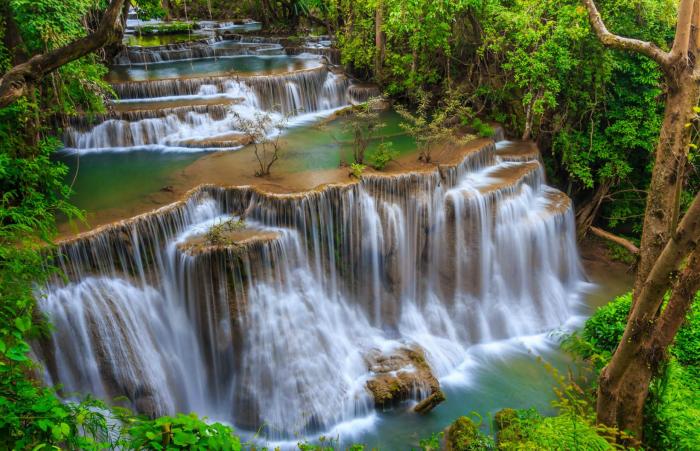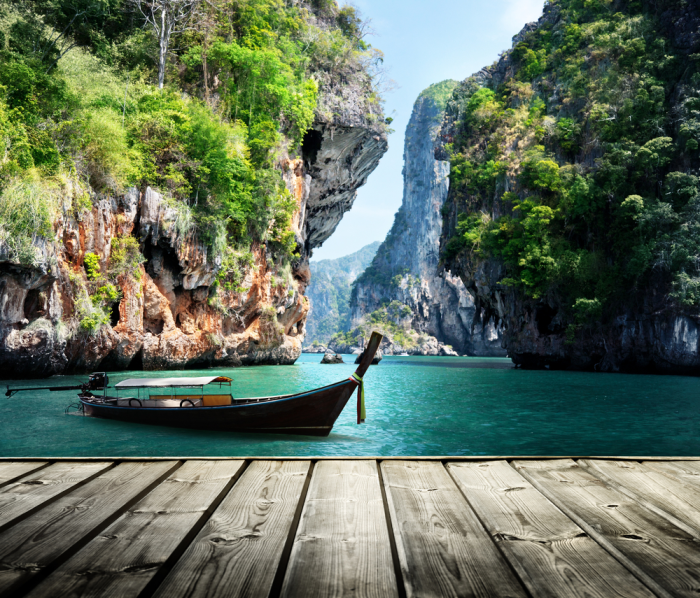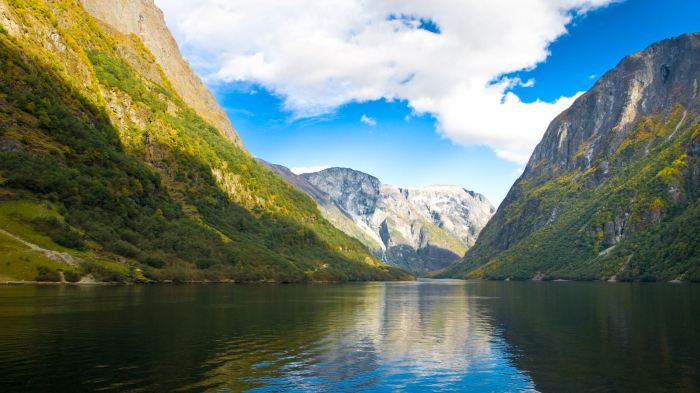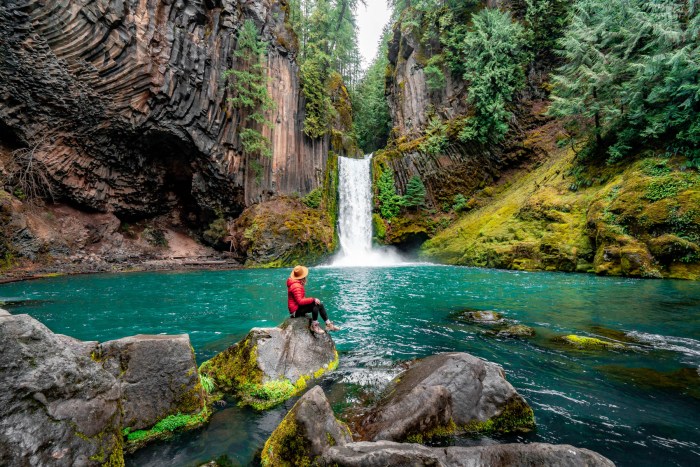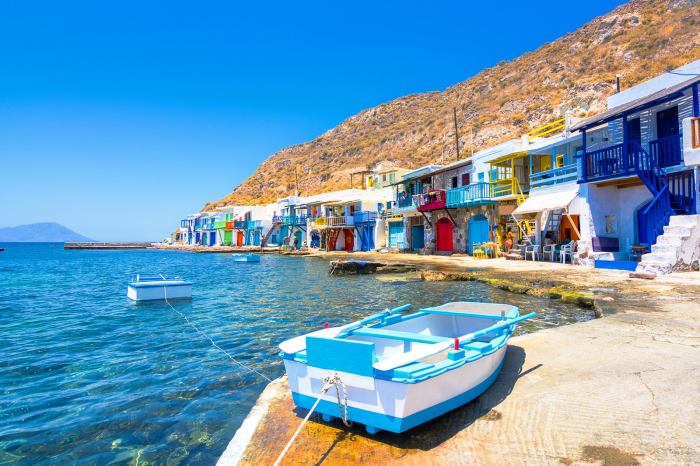Top 25 Natural Wonders Of The World
Top 25 Natural Wonders Of The World – it’s a list that sparks wanderlust and a deep appreciation for the planet’s raw beauty. From towering mountains to vibrant coral reefs, these wonders represent the pinnacle of nature’s artistry. This list isn’t just about stunning visuals, it’s a celebration of geological forces, diverse ecosystems, and the cultural significance these places hold for humanity.
Imagine standing at the edge of the Grand Canyon, its vastness humbling you. Or snorkeling in the Great Barrier Reef, surrounded by a kaleidoscope of marine life. These experiences, and countless others, are what make this list so captivating. We’ll explore the stories behind each wonder, the science that shaped them, and the challenges we face in protecting them for future generations.
Defining Natural Wonders
Natural wonders are awe-inspiring features of the natural world that captivate our imaginations and leave us humbled by the sheer power and beauty of nature. They are often characterized by their unique geological formations, stunning landscapes, and incredible biodiversity.
Criteria for Defining Natural Wonders
Natural wonders are typically defined by their exceptional beauty, uniqueness, and significance. They are often considered to be:
- Rare and Unique:Natural wonders stand out from the ordinary and possess features that are not commonly found in other parts of the world.
- Geologically or Biologically Significant:They represent important geological processes, ecosystems, or species that contribute to the diversity and richness of the planet.
- Aesthetically Pleasing:They evoke a sense of wonder and inspire appreciation for the beauty and grandeur of the natural world.
- Historically or Culturally Important:Some natural wonders hold cultural or historical significance for specific communities or civilizations, often serving as sacred sites or landmarks.
Significance of Natural Wonders for Humanity
Natural wonders hold immense significance for humanity, serving as:
- Sources of Inspiration and Wonder:They spark our curiosity and imagination, reminding us of the vastness and complexity of the natural world.
- Tourism Destinations:Natural wonders attract millions of visitors annually, generating economic benefits and promoting cultural exchange.
- Ecosystem Services:They provide essential ecosystem services, such as clean air and water, climate regulation, and biodiversity conservation.
- Scientific Research Opportunities:They offer valuable insights into geological processes, ecological interactions, and the history of the Earth.
- Cultural Heritage:Natural wonders often hold deep cultural and spiritual significance for indigenous communities and local populations.
Types of Natural Wonders
Natural wonders encompass a wide range of features, including:
- Geological Formations:These include canyons, caves, mountains, volcanoes, and glaciers, showcasing the immense power and creativity of geological processes.
- Wildlife:Natural wonders can also include exceptional wildlife populations, such as large mammal migrations, unique bird species, and vibrant coral reefs, highlighting the biodiversity of our planet.
- Landscapes:From deserts and forests to waterfalls and coastlines, these stunning landscapes offer breathtaking views and a glimpse into the diversity of Earth’s ecosystems.
Top 25 Natural Wonders
The world is a place of awe-inspiring beauty and incredible natural phenomena. From towering mountains to vast oceans, from vibrant coral reefs to lush rainforests, our planet is home to an array of wonders that leave us speechless. To capture the essence of these marvels, many lists and rankings have been compiled, attempting to showcase the most spectacular and captivating natural wonders on Earth.
Among these, the Top 25 Natural Wonders is a popular and widely recognized list, featuring a diverse selection of landscapes, geological formations, and ecosystems that represent the very best of nature’s artistry.
While the selection process for such a list can be subjective and open to debate, it generally considers various factors that contribute to a natural wonder’s significance and appeal.
Selection Criteria
The selection criteria for the Top 25 Natural Wonders are based on a combination of factors, including:
- Uniqueness:Natural wonders are often chosen for their distinctive features, rare geological formations, or unique ecosystems. For example, the Grand Canyon’s vast scale and intricate layers of rock are unmatched, making it a truly unique natural wonder.
- Beauty:Aesthetics play a significant role in the selection process, with the most stunning and captivating landscapes, formations, and wildlife being highly valued. The Northern Lights, for instance, are renowned for their ethereal beauty and mesmerizing dance across the sky.
- Scientific Significance:Natural wonders often hold immense scientific value, offering insights into geological processes, biological diversity, or climate change. The Great Barrier Reef, for example, is a vital ecosystem that provides a home to countless species and is a critical research site for understanding coral health and climate change impacts.
- Cultural Importance:Some natural wonders hold deep cultural significance for local communities or indigenous peoples. The Uluru (Ayers Rock) in Australia, for instance, is a sacred site for the Aboriginal people, holding profound spiritual meaning and cultural significance.
These criteria are not mutually exclusive, and many natural wonders excel in multiple areas.
Geographic Distribution
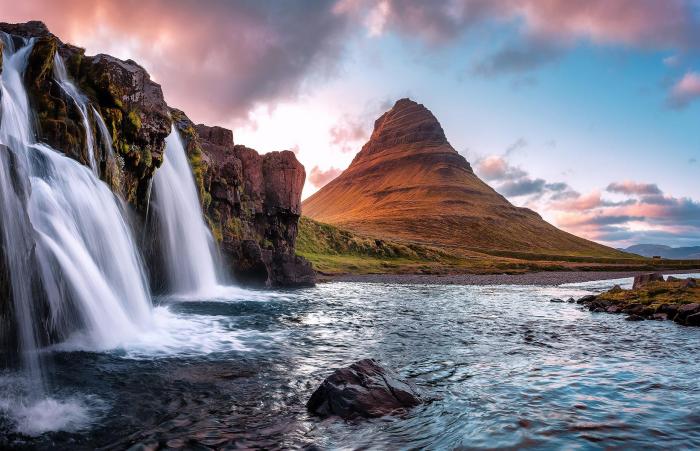
The Top 25 Natural Wonders are scattered across the globe, showcasing the Earth’s diverse landscapes and geological formations. This distribution provides a glimpse into the planet’s rich history and the powerful forces that have shaped it over millions of years.
Distribution of Natural Wonders
The following table Artikels the geographic distribution of the Top 25 Natural Wonders, highlighting the continents, countries, and specific locations where these awe-inspiring features can be found.
| Continent | Country | Location | Natural Wonder |
|---|---|---|---|
| North America | United States | Grand Canyon, Arizona | Grand Canyon |
| North America | Canada | Banff National Park, Alberta | Banff National Park |
| South America | Brazil | Amazon Rainforest | Amazon Rainforest |
| South America | Peru | Machu Picchu | Machu Picchu |
| Europe | Iceland | Blue Lagoon | Blue Lagoon |
| Europe | Italy | Amalfi Coast | Amalfi Coast |
| Asia | China | Great Wall of China | Great Wall of China |
| Asia | India | Taj Mahal | Taj Mahal |
| Africa | Tanzania | Ngorongoro Crater | Ngorongoro Crater |
| Africa | South Africa | Table Mountain | Table Mountain |
| Australia | Australia | Great Barrier Reef | Great Barrier Reef |
| Australia | Australia | Uluru | Uluru |
| Antarctica | Antarctica | South Pole | South Pole |
| North America | United States | Yellowstone National Park, Wyoming | Yellowstone National Park |
| North America | Mexico | Cenotes of Yucatan Peninsula | Cenotes of Yucatan Peninsula |
| South America | Chile | Torres del Paine National Park | Torres del Paine National Park |
| South America | Venezuela | Angel Falls | Angel Falls |
| Europe | Greece | Meteora | Meteora |
| Europe | France | French Riviera | French Riviera |
| Asia | Japan | Mount Fuji | Mount Fuji |
| Asia | Vietnam | Ha Long Bay | Ha Long Bay |
| Africa | Egypt | Pyramids of Giza | Pyramids of Giza |
| Africa | Botswana | Okavango Delta | Okavango Delta |
| Australia | Australia | Sydney Opera House | Sydney Opera House |
| Australia | Australia | Twelve Apostles | Twelve Apostles |
| Antarctica | Antarctica | Ross Ice Shelf | Ross Ice Shelf |
Geological Wonders
The Earth’s geological history is etched into its surface, creating breathtaking formations that captivate our imaginations. These geological wonders, sculpted by forces of nature over millions of years, stand as testaments to the planet’s dynamic and ever-changing nature. They are a reminder of the immense power of nature and the intricate processes that have shaped our world.
Geological Formations and their Creation
The Earth’s geological wonders are a result of various processes, including erosion, volcanic activity, and tectonic plate movement.
- Erosion: The relentless forces of wind, water, and ice carve out landscapes, creating canyons, arches, and other dramatic features. The Grand Canyon, for instance, is a testament to the power of the Colorado River, which has eroded the rock over millions of years.
- Volcanic Activity: The Earth’s internal heat drives volcanic eruptions, which spew molten rock, ash, and gases, forming mountains, craters, and lava flows. The Hawaiian Islands, born from volcanic activity, offer stunning examples of volcanic landscapes, including active volcanoes and black sand beaches.
- Tectonic Plate Movement: The Earth’s crust is made up of tectonic plates that constantly move and interact, causing earthquakes, volcanic eruptions, and the formation of mountain ranges. The Himalayas, the highest mountain range in the world, were formed by the collision of the Indian and Eurasian tectonic plates.
Examples of Geological Wonders
The Top 25 Natural Wonders of the World feature a diverse array of geological formations, each with its unique story.
- Grand Canyon: The Grand Canyon, a UNESCO World Heritage Site, is a testament to the power of erosion. The Colorado River has carved out this massive canyon, revealing layers of rock that span billions of years. The canyon’s sheer size and colorful rock formations make it one of the most awe-inspiring natural wonders in the world.
- Victoria Falls: Located on the Zambezi River, Victoria Falls is one of the largest waterfalls in the world. The falls are a result of the Zambezi River cascading over a basalt cliff, creating a spectacular display of water and mist.
- Mount Everest: The highest mountain on Earth, Mount Everest is a symbol of human ambition and the power of nature. The mountain was formed by the collision of the Indian and Eurasian tectonic plates, which pushed up the Himalayas.
- Uluru (Ayers Rock): Uluru, a sacred site for the Aboriginal people of Australia, is a massive sandstone monolith. The rock is estimated to be over 600 million years old and is believed to have formed deep within the Earth’s crust.
- The Great Barrier Reef: The world’s largest coral reef system, the Great Barrier Reef is a testament to the beauty and fragility of marine ecosystems. The reef is made up of billions of tiny organisms called coral polyps, which build up over time to form intricate structures.
Interesting Facts and Stories
These geological wonders are not just breathtaking sights but also hold fascinating stories and facts.
- The Grand Canyon is so vast that it can be seen from space.
- Victoria Falls is so powerful that it creates a mist that can be seen for miles.
- Mount Everest is constantly growing taller due to the ongoing collision of tectonic plates.
- Uluru changes color throughout the day, appearing red at sunrise and sunset.
- The Great Barrier Reef is home to over 1,500 species of fish and 400 species of coral.
Biological Wonders

The Top 25 Natural Wonders are not only breathtaking landscapes but also harbor a vast array of biodiversity, from unique species to endangered animals. These wonders represent important biodiversity hotspots, showcasing the incredible diversity of life on Earth.
Biodiversity Hotspots and Unique Species
The Top 25 Natural Wonders are home to many globally recognized biodiversity hotspots, areas with exceptional concentrations of endemic species and high levels of endemism. These areas face significant threats, including habitat loss, climate change, and invasive species.
- The Amazon Rainforest, home to an estimated 10% of the world’s known species, is a biodiversity hotspot. It’s a vital carbon sink and is home to numerous endemic species, such as the Amazon River dolphin and the giant anteater.
- The Great Barrier Reef, the world’s largest coral reef system, is another biodiversity hotspot. It supports a diverse array of marine life, including over 1,500 species of fish, 411 species of hard coral, and numerous species of sea turtles.
- The Galapagos Islands, renowned for their unique flora and fauna, are a prime example of adaptive radiation. The islands are home to the giant tortoise, the marine iguana, and the Galapagos penguin, all species that have evolved unique adaptations to their environment.
Endangered Animals
The Top 25 Natural Wonders also face the challenge of protecting endangered species. Human activities, such as habitat destruction, pollution, and poaching, have significantly impacted many populations.
- The African Elephant, an iconic species found in the Serengeti National Park and other protected areas, is threatened by poaching for ivory.
- The Mountain Gorilla, found in the Virunga Mountains and Bwindi Impenetrable National Park, is critically endangered due to habitat loss and poaching.
- The Sumatran Orangutan, found in the rainforests of Indonesia, is critically endangered due to habitat loss and the illegal pet trade.
Conservation Efforts and Challenges
Protecting the biological wonders within the Top 25 Natural Wonders requires a multi-faceted approach that involves governments, conservation organizations, and local communities.
- Protected Areas: Establishing and managing protected areas is crucial for conserving biodiversity. These areas provide safe havens for endangered species and help to preserve natural ecosystems.
- Sustainable Tourism: Responsible tourism practices can contribute to conservation efforts by generating revenue for local communities and promoting awareness about biodiversity.
- Community Engagement: Engaging local communities in conservation efforts is essential for long-term success. This can involve providing economic incentives for sustainable practices and empowering communities to manage their natural resources.
Cultural Significance
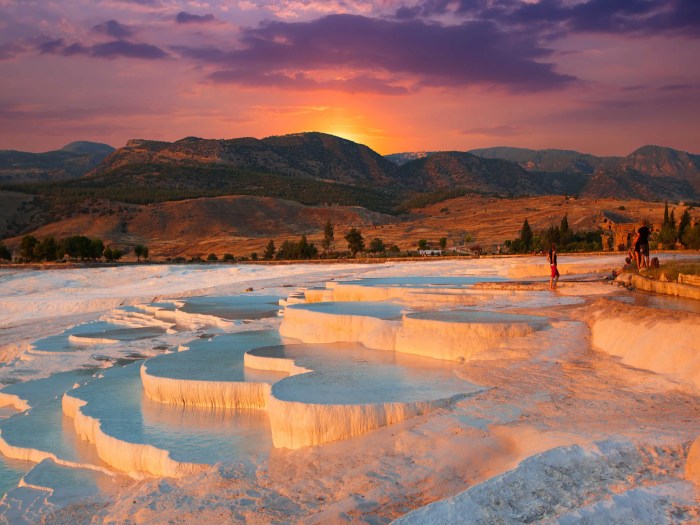
The Top 25 Natural Wonders are not just awe-inspiring landscapes, but also deeply embedded in human culture. They have served as sources of inspiration for art, literature, music, and mythology, and have shaped the spiritual beliefs and traditions of countless communities around the world.
Mythology and Folklore
These natural wonders often play a prominent role in myths and legends, serving as the setting for epic tales and as symbols of power, beauty, and the divine.
- For example, the Grand Canyon in the United States is revered by the Hopi people as a sacred site, believed to be the place where their ancestors emerged from the underworld. The canyon’s vastness and depth are seen as a symbol of the universe and the interconnectedness of all things.
- The Great Barrier Reef in Australia is considered a spiritual entity by the Aboriginal people, who see it as a source of life and sustenance. The reef is also the subject of numerous myths and legends, including stories of sea serpents and other mythical creatures.
Spiritual Beliefs
Many of these wonders are considered sacred spaces by indigenous cultures, and are often associated with specific deities or spiritual forces.
- Mount Fuji in Japan is a sacred mountain in Shintoism, believed to be the home of the goddess Konohanasakuya-hime. The mountain is a popular site for pilgrimages and is seen as a symbol of purity and enlightenment.
- The Amazon Rainforest in South America is revered by indigenous tribes as a living deity, providing sustenance and spiritual guidance. The rainforest is seen as a source of immense power and is considered to be a vital part of the Earth’s ecosystem.
Cultural Traditions
The Top 25 Natural Wonders have also inspired countless cultural traditions and celebrations.
- The Northern Lights, or Aurora Borealis, are a source of wonder and inspiration for the Inuit people of the Arctic. They are believed to be the spirits of the ancestors dancing in the sky. The aurora is often celebrated with stories, songs, and dances.
- The Victoria Falls in Africa is a site of great cultural significance for the Tonga people, who believe that the falls were created by a god who wanted to create a place for the people to fish. The falls are a popular destination for tourists, but they are also a place of spiritual significance for the Tonga people.
You know how there’s that whole “Top 25 Natural Wonders of the World” thing? Well, Namibia is seriously in the running for a few spots on that list. It’s got everything from the otherworldly landscapes of Sossusvlei to the incredible wildlife in Etosha National Park.
If you’re looking to add some seriously awesome natural beauty to your travel bucket list, you gotta check out Top 10 Places To Visit in Namibia. You’ll be amazed by the sheer diversity of landscapes and experiences – it’s truly a place where you can feel like you’re on another planet.
And, hey, maybe Namibia will even make it onto the official Top 25 list someday!
Tourism and Impact
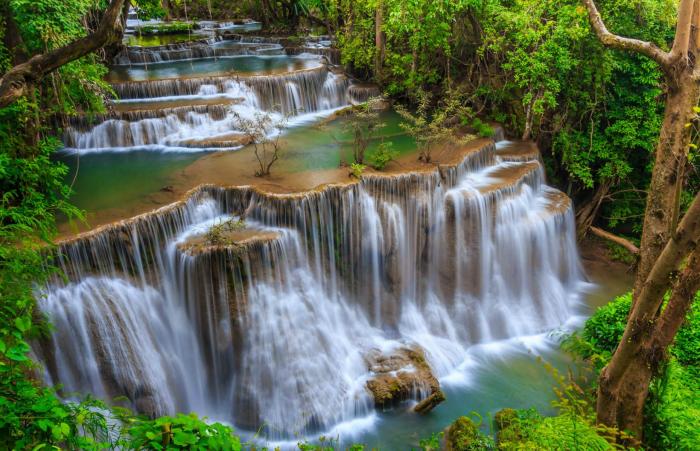
The Top 25 Natural Wonders attract millions of tourists each year, generating significant economic benefits for local communities and governments. However, the influx of visitors can also have both positive and negative impacts on these fragile ecosystems.
Benefits of Tourism Development
Tourism can contribute to economic growth and development in areas surrounding natural wonders.
- Increased employment opportunities in sectors like hospitality, transportation, and tourism services.
- Enhanced infrastructure development, including roads, airports, and accommodations.
- Increased local investment and economic activity.
- Improved public awareness and appreciation of natural wonders.
Challenges of Tourism Development
The rapid growth of tourism can pose significant challenges to the preservation of natural wonders.
It’s pretty wild to think about the Top 25 Natural Wonders of the World, right? From the Grand Canyon to the Great Barrier Reef, these places are just insane. But if you’re looking for a little European adventure, check out the Top 10 Places To Visit in The Netherlands.
The Netherlands has some pretty awesome landscapes, from windmills to tulip fields, that would definitely make the list of natural wonders. And, you know, maybe you can even get some stroopwafels while you’re there.
- Increased pollution and waste generation.
- Habitat fragmentation and degradation.
- Overcrowding and disturbance to wildlife.
- Erosion and damage to natural features.
Sustainable Tourism Practices
To mitigate the negative impacts of tourism, many natural wonder sites have implemented sustainable tourism practices.
- Ecotourism: Emphasizes responsible travel that minimizes environmental impact and supports local communities. This approach often involves guided tours led by local experts, educating visitors about the natural environment and promoting responsible behavior.
- Visitor Management: Implementing measures to control visitor numbers and regulate access to sensitive areas, such as limiting the number of visitors per day or establishing designated trails. This helps prevent overcrowding and minimize the impact on the environment.
- Waste Management: Implementing efficient waste collection and recycling programs to reduce the amount of waste generated by tourists and minimize pollution.
- Community Involvement: Involving local communities in tourism planning and management to ensure that benefits are shared and cultural values are respected. This can involve employing local guides, using locally sourced products, and supporting community-based initiatives.
Threats and Conservation
Our planet’s natural wonders, while breathtaking, are not immune to the pressures of human activity and environmental change. From climate change to pollution, these wonders face a multitude of threats that require urgent attention and proactive conservation efforts.
Threats to Natural Wonders
The Top 25 Natural Wonders are facing a range of threats, including:
- Climate Change:Rising global temperatures, extreme weather events, and sea-level rise pose significant risks to many natural wonders, such as glaciers, coral reefs, and coastal ecosystems. For example, the melting of glaciers in the Himalayas threatens water resources for millions of people downstream.
- Pollution:Air, water, and land pollution from industrial activities, agriculture, and waste disposal degrade natural environments, impacting biodiversity and the aesthetic beauty of natural wonders. The Great Barrier Reef, for instance, has suffered significant damage from pollution and climate change.
- Deforestation:The clearing of forests for logging, agriculture, and development destroys habitats, reduces biodiversity, and contributes to climate change. The Amazon rainforest, a vital carbon sink and home to countless species, is facing increasing deforestation pressures.
- Overtourism:The influx of tourists, especially in popular destinations, can lead to overcrowding, damage to fragile ecosystems, and cultural disruption. The Taj Mahal in India has experienced significant wear and tear due to the large number of visitors.
- Invasive Species:Introduced species can outcompete native organisms, disrupt ecosystems, and threaten the survival of endemic species. The introduction of invasive plants and animals has impacted the Galapagos Islands, threatening the unique biodiversity of the region.
Conservation Efforts
Recognizing the urgency of protecting these natural wonders, various conservation efforts are underway:
- International Cooperation:Organizations like UNESCO and the International Union for Conservation of Nature (IUCN) work with governments and local communities to develop and implement conservation strategies.
- Protected Areas:Establishing national parks, reserves, and other protected areas helps safeguard natural wonders from human exploitation and development.
- Sustainable Tourism:Promoting responsible tourism practices, such as eco-lodges, minimizing environmental impact, and supporting local communities, can help reduce the negative impacts of tourism.
- Community Engagement:Engaging local communities in conservation efforts is crucial for ensuring long-term sustainability. Local knowledge and participation are vital for effective conservation.
- Research and Monitoring:Ongoing research and monitoring provide essential data to understand the threats to natural wonders and develop effective conservation strategies.
Successful Conservation Initiatives
- The Great Barrier Reef Marine Park:Established in 1975, the Great Barrier Reef Marine Park is a UNESCO World Heritage Site that has implemented zoning, fishing restrictions, and other measures to protect the reef from overexploitation and pollution.
- The Galapagos Islands:The Galapagos Islands, also a UNESCO World Heritage Site, have strict regulations on tourism, invasive species control, and conservation efforts to protect its unique biodiversity.
- The Yellowstone National Park:The Yellowstone National Park in the United States has been a model for conservation, with its emphasis on preserving natural processes and minimizing human impact.
Ongoing Challenges, Top 25 Natural Wonders Of The World
Despite the efforts, significant challenges remain in protecting these natural wonders:
- Funding:Conservation efforts require substantial financial resources, and securing adequate funding remains a challenge.
- Enforcement:Enforcing conservation regulations and addressing illegal activities can be difficult, especially in remote or politically unstable regions.
- Climate Change:Climate change is a global challenge that requires international cooperation and drastic reductions in greenhouse gas emissions to effectively protect natural wonders.
Future of Natural Wonders: Top 25 Natural Wonders Of The World
The future of the Top 25 Natural Wonders, and indeed all natural wonders, is inextricably linked to the choices we make today. Climate change and human activity pose significant threats, and the preservation of these sites requires a multifaceted approach.
Impact of Climate Change and Human Activity
Climate change, driven by human activities like burning fossil fuels, is causing a rise in global temperatures, leading to more frequent and severe weather events, rising sea levels, and shifts in ecosystems. These changes threaten the very existence of natural wonders.
For instance, the Great Barrier Reef, a UNESCO World Heritage Site, is facing coral bleaching due to warming ocean temperatures, which can lead to the death of coral polyps. Similarly, glaciers like the Perito Moreno Glacier in Argentina are retreating due to rising temperatures, impacting their majestic beauty and contributing to rising sea levels.
Human activities like deforestation, pollution, and over-exploitation of resources also contribute to the degradation of natural wonders. For example, the Amazon rainforest, the “lungs of the planet,” is facing deforestation for agricultural expansion and logging, which disrupts its delicate ecosystem and contributes to climate change.
Role of Education, Technology, and International Cooperation
Education plays a crucial role in fostering environmental awareness and promoting sustainable practices. By educating the public about the importance of natural wonders and the threats they face, we can encourage responsible tourism, conservation efforts, and support for policies that protect these sites.
Technology can provide innovative solutions for monitoring, managing, and restoring natural wonders. Remote sensing and Geographic Information Systems (GIS) can help track changes in ecosystems, predict potential threats, and inform conservation strategies. For example, satellite imagery can be used to monitor deforestation rates in the Amazon rainforest and identify areas that require immediate attention.
International cooperation is essential for tackling transboundary issues like climate change and pollution. By working together, countries can share knowledge, resources, and expertise to protect natural wonders that transcend national borders. The International Union for Conservation of Nature (IUCN) provides a platform for collaboration among governments, organizations, and scientists to address global conservation challenges.
Personal Reflections
Standing amidst the grandeur of the Grand Canyon, or witnessing the vibrant tapestry of the Great Barrier Reef, evokes a profound sense of awe and humility. These natural wonders remind us of the immense power and beauty of the Earth, and our responsibility to protect them.
Emotional Impact and Lasting Memories
These encounters leave an indelible mark on our souls. The sheer scale of the Grand Canyon, the vibrant colors of the Great Barrier Reef, or the serene beauty of the Northern Lights inspire a sense of wonder and appreciation for the natural world.
These experiences transcend the ordinary, creating memories that last a lifetime.
You know those lists of the Top 25 Natural Wonders of the World? Well, Crete is definitely a contender for a spot on that list! The island boasts incredible landscapes, from the Samaria Gorge to the beaches of Elafonisi. If you’re looking for a taste of the Mediterranean paradise, check out the Top 10 Places To Visit in Crete for some inspiration.
You’ll be blown away by the beauty of the island and its place among the world’s most stunning natural wonders.
Importance of Preserving Natural Treasures
These natural wonders are not just beautiful; they are vital to the health of our planet and the well-being of future generations. They provide habitats for countless species, regulate climate, and offer countless opportunities for recreation and inspiration. Protecting them is not just a moral obligation, but an essential step towards ensuring a sustainable future.
Final Conclusion
The Top 25 Natural Wonders of the World remind us of the power and fragility of our planet. They are testaments to the incredible processes that have shaped our world, and they serve as a call to action to protect these treasures for generations to come.
As you explore this list, let it inspire you to connect with nature, to appreciate its beauty, and to become an advocate for its preservation.
Expert Answers
What criteria were used to select the Top 25 Natural Wonders?
The selection process considered factors like uniqueness, beauty, scientific significance, cultural importance, and the overall impact of each wonder.
Are all the Top 25 Natural Wonders located in developed countries?
No, the list represents a diverse range of locations, showcasing natural wonders from all continents, including both developed and developing nations.
What are some of the biggest threats facing these natural wonders?
Major threats include climate change, pollution, deforestation, and unsustainable tourism practices.
How can I contribute to the conservation of these natural wonders?
You can support conservation organizations, practice responsible tourism, and advocate for environmental policies that protect these sites.
